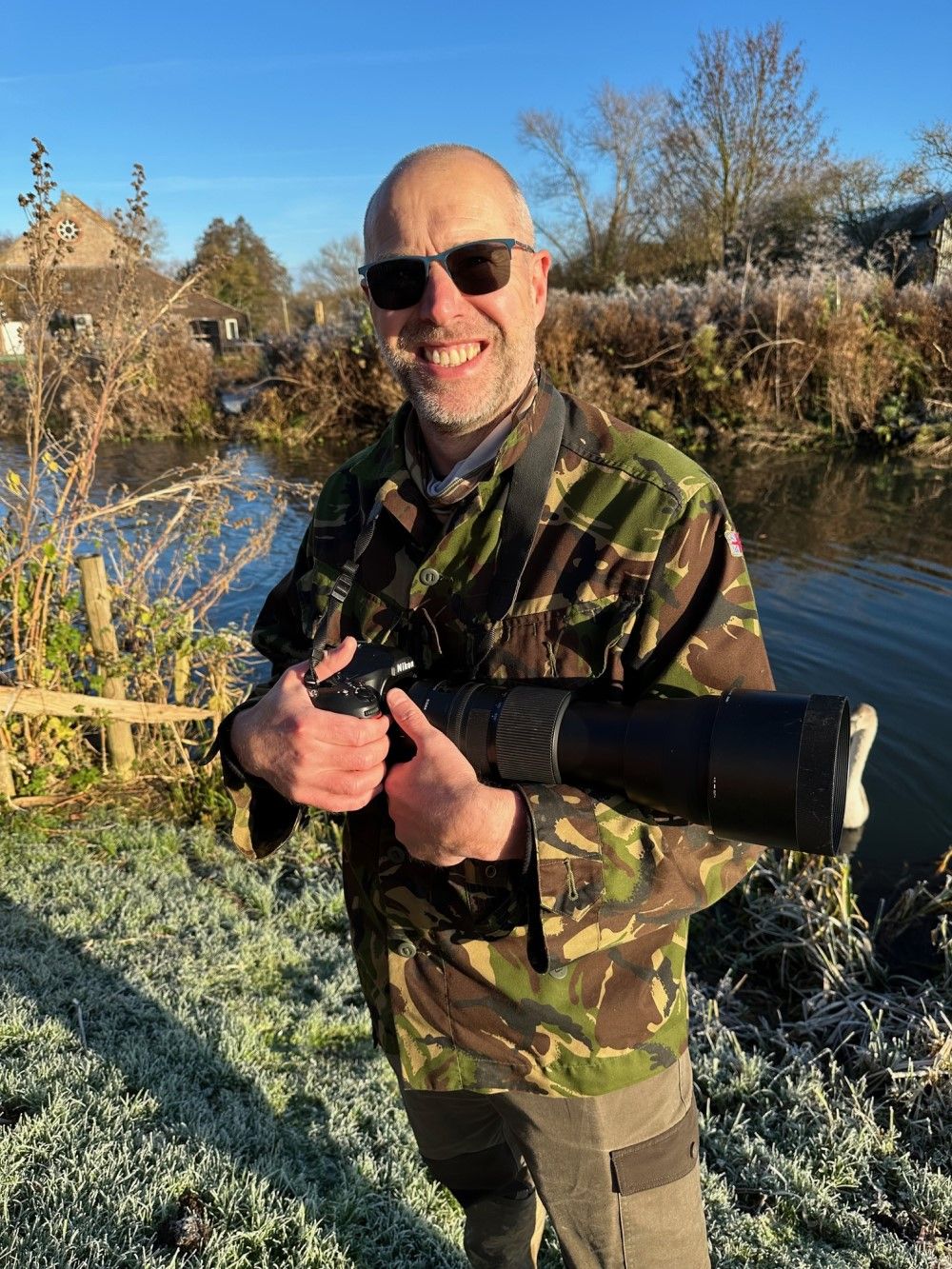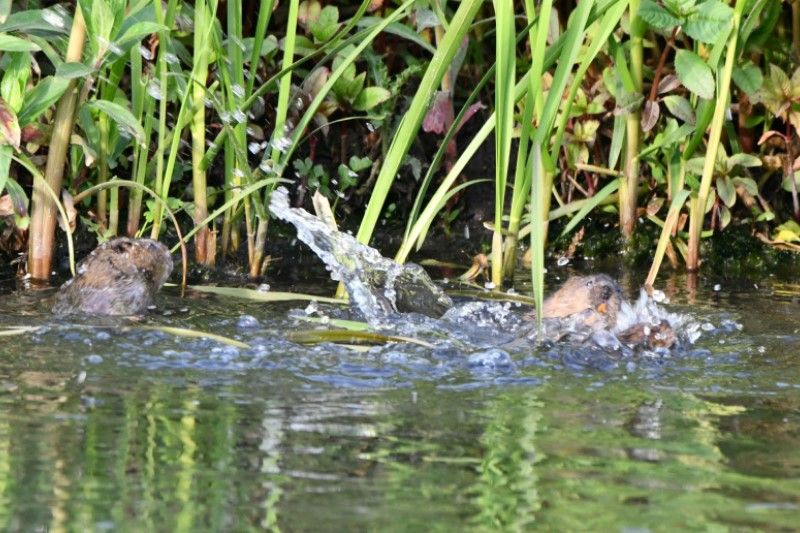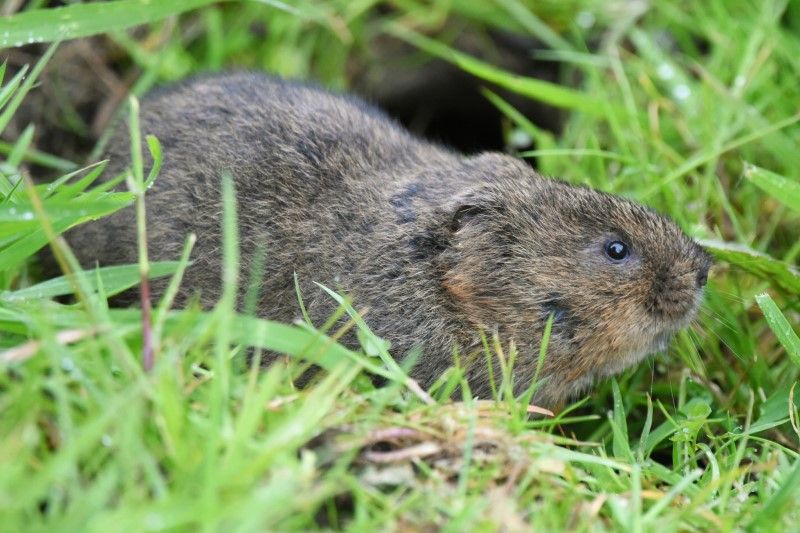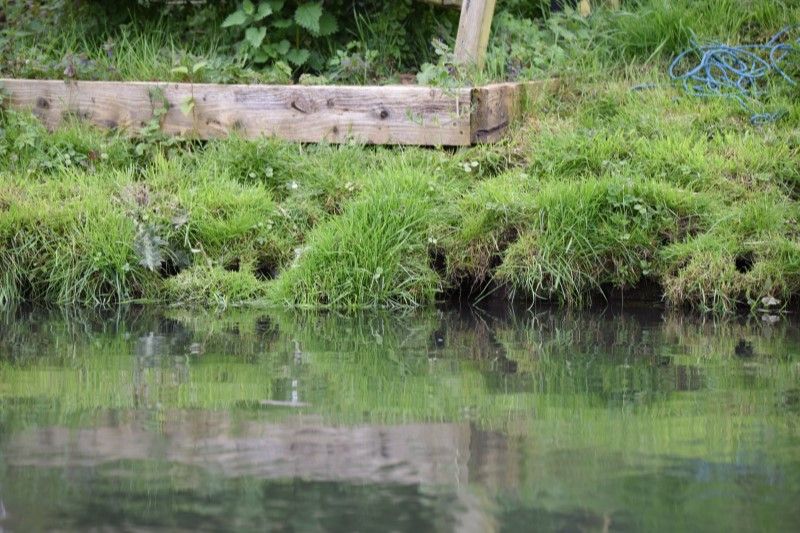Meet David Edwards: water vole guardian
In this series, we chat to the dedicated staff members, conservation partners and volunteers at PTES. We find out why each of them chose a career in wildlife conservation, what they find rewarding about their work or what they love most about what they do and why they get involved.
David Edwards
Survey volunteer in Gloucestershire
Why did you decide to volunteer with PTES?
I’ve always been a keen photographer, but a move to the countryside in 2016 to a house beside a river in Gloucestershire made me fall in love with wildlife photography.
The previous owner had built a hide overlooking the river, so I’ve been making good use of that ever since. I didn’t possess great knowledge of wildlife – I’d never even seen a kingfisher in the wild before – so I used to enjoy taking pictures and then identifying the various species.
This is when I realised we had water voles living at the bottom of our garden. I knew they were endangered so I felt very lucky to have them. Through my pictures and some local contacts, I connected with Gloucester Wildlife Trust and they arranged for Emily at PTES to deliver a Water Vole Ecology and Field Signs training course at Fromebridge Mill. From there I got involved with the National Water Vole Monitoring Programme, surveying my stretch of river for water vole activity, which I am glad to say, was plentiful.
What’s the most interesting thing you’ve learnt about water voles? Did anything surprise you?
Ever since first spotting a water vole (and finding out what it was first of all!), I’ve been interested in learning more about them. The training day run by PTES was excellent, a few hours in the “classroom” (our local pub), then a couple of hours out and about searching for field signs. Nearly all of this was new to me, the information that is, not the pub. I think the most interesting thing I learnt was about their lifespan and how often they breed, having several litters a year. This is a good thing, as the odds are stacked against them with the loss of habitat and the number of predators looking for a meal. This made me realise even more how lucky I am to live by a seemingly healthy population.
Has your volunteering been rewarding and, if so, in what way?
Yes it’s been incredibly rewarding, I would have continued taking my pictures regardless, but there is also now a purpose to it other than just a hobby. I’ve been able to share my pictures and video clips with Emily at PTES knowing that the information can be used to build a picture of how well water voles are doing in the local area and hopefully help in their conservation.
What has been one of your most memorable experiences so far?
Without a doubt the standout moment for me was when lockdown had just come into effect. It was a warm day and we were having a drink down by the river. I’d taken my camera with me, as I nearly always did, we were just sitting there drinking our tea when I spotted a movement in the grass. I’d been putting small apple chunks down for the water voles as I’d read they like it, and a water vole was sticking its head out of it’s burrow, checking if the coast was clear. This was just a couple of metres from where we were sitting. It was almost too close for my camera to focus on with the lens I had fitted at the time. However, I managed to get a few shots as it dashed about. There have been other instances of that happening since, but the first time you see one up close like that stays in your mind.
What are the main reasons for some of your great successes?
The main reason I see water voles fairly often is because we happen to live right by an active burrow system. I spend a lot of time in the hide, not just looking out for water voles, but any kind of wildlife. Over the past few years I’ve got to know their habits, where they’re likely to be and the best times to see them. Like a lot of species, they’re not nearly as active over the winter, but then come spring, they seem to come out looking to make up for those quiet times. The increased activity and relatively low levels of natural cover make them easier to spot. Spring is definitely the best time of year and early evening is usually the best time, although you could see them at any time of the day.
What has been your proudest moment so far?
I’m a relative newcomer to water voles and have only very recently got involved with monitoring them, so for me, being asked to write this piece is up there. Thank you.
What does the future hold for you, water voles, and your local area?
The next few years should be quite interesting, the Gloucestershire Wildlife Trust are involved in a project, Cotswold Canals Connected, to restore a stretch of canal nearby. Part of this is to create new habitat that should help the water voles, so it will be interesting to watch this develop and hopefully see water voles expand into these new habitats. Of course, I’ll continue to look out for our local voles and take part in the annual survey, and if I can, get some more photographs.
Learn more about our work saving water voles and how you can get involved:
Header image and all in-text photos by David Edwards.




